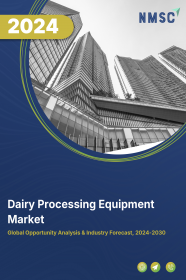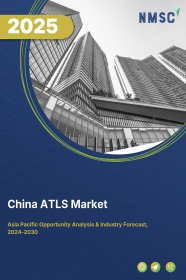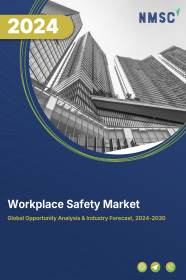
Sweden Elevator Market by Type (Passenger Elevator, and Others), by Technology (Traction and Hydraulic), by Service (New Installation, and Others), by Capacity (Less than 1500 KG, and Others), by Speed (Less than 1 M/S, and Others), by Deck Type (Single Deck and Double Deck), by Designation Control (Smart and Conventional), by Door Type (Automatic and Manual), by Operation (Low-Rise, and Others), by Application (Residential, and Others)- Opportunity Analysis and Industry Forecast, 2024 –2030
Industry: Construction & Manufacturing | Publish Date: 01-Mar-2025 | No of Pages: 167 | No. of Tables: 129 | No. of Figures: 74 | Format: PDF | Report Code : CM1632
Market Definition
Sweden Elevator Market size was valued at USD 576.78 million in 2023, and is predicted to reach USD 987.22 million by 2030, at a CAGR of 6.9 % from 2024 to 2030. The elevator market embodies a vibrant sector that encompasses the conception, production, installation, and upkeep of elevator systems. Ranging from traditional traction elevators to state-of-the-art smart solutions, this market presents a diverse range of vertical transportation options tailored to meet the unique needs of various buildings and infrastructure projects. Key players within the elevator market include manufacturers, suppliers, contractors, architects, building proprietors, and facility managers.
Manufacturers persistently innovate to elevate elevator performance, safety standards, and sustainability practices, while suppliers furnish essential components and materials essential for system assembly. Moreover, sustainability considerations, such as energy efficiency and material recyclability, are increasingly integrated into elevator design and operation, aligning with broader environmental goals and sustainable building principles. Consequently, the elevator market stands as a pivotal pillar of vertical mobility, enhancing functionality, accessibility, and sustainability across buildings and urban environments worldwide
Increasing Technological Advancements in Elevators Propels the Market Growth
Sweden's evolving urban landscape is witnessing a surge in demand for modern infrastructural facilities to accommodate the needs of its growing population. With urbanization reshaping the country's cities, there is a growing requirement for advanced commercial complexes, residential buildings, industrial facilities, and other structures. elevators play a vital role in enhancing accessibility and efficiency within these developments. Consequently, the rising demand for modern infrastructural facilities contributes significantly to the expansion of the elevator market in Sweden.
Surging Concentration of People in Urban Areas is Boosting the Growth of the Market
The substantial urban population in Sweden, comprising 88.7% of the total population and exhibiting a steady annual growth rate of 0.89%, is a fundamental driver propelling the construction sector forward. This demographic trend plays a crucial role in shaping various industries and residential developments nationwide. As urbanization continues to transform Swedish cities, there is a heightened demand for infrastructural facilities, commercial complexes, residential buildings, and industrial establishments to meet the evolving needs of urban residents. This increases the need for elevators, which, in turn, boosts the market growth.
High Initial Costs Obstruct Market Growth Within the Region
The substantial expenses associated with the installation, upkeep, and enhancement of elevators pose barriers to market expansion. From the initial installation outlay to the ongoing maintenance charges and the need for upgrades to meet safety regulations and enhance energy efficiency, building proprietors encounter significant financial challenges. These difficulties are particularly formidable for owners situated in economically disadvantaged areas or within older structures. As a result, the heightened costs linked with elevators impede market growth across various regions.
The Integration of Artificial Intelligence (AI) Within Elevators Sets the Stage for Future Growth Opportunities
The integration of AI-powered predictive maintenance into the elevator industry represents a promising opportunity, fundamentally transforming maintenance and operational practices through AI innovations. Through the analysis of data collected from elevator sensors, AI algorithms can forecast maintenance needs ahead of time, reducing downtime and maximizing elevator availability. This proactive approach not only extends the lifespan of elevator components but also enhances safety by predicting unexpected malfunctions and optimizing resource allocation, resulting in significant cost savings for elevator companies. Furthermore, well-maintained elevators enhance user satisfaction, thereby enhancing the overall experience for building occupants and visitors. Embracing AI-driven predictive maintenance enables elevator firms to remain competitive and uphold service excellence in an ever-evolving market environment.
Competitive Landscape
The Sweden elevator market comprises various market players, such as LUTZ Elevator, Kalea Lifts, Cibes Lift Group AB, SWIFT Home Lifts Sweden AB, Artico, Hydroware AB, Nordic Lift AB, KONE Corporation, OTIS AB, Schneider Electric SE, Hitachi, Ltd., Wittur Sweden AB, Mitsubishi Electric Corporation, TK Elevator Sweden AB, Motum Group and others.
Sweden Elevator Market Key Segments
By Type
-
Passenger elevator
-
Freight elevator
-
Others
By Technology
-
Traction
-
Machine Room [MR] Traction
-
Machine Roomless [MRL] Traction
-
-
Hydraulic
By Service
-
New Installation
-
Maintenance
-
Modernization
By Capacity
-
Less than 1500 kg
-
1500 to 2500 kg
-
2501 to 4000 kg
-
More than 4000 kg
By Speed
-
Less than 1 M/S
-
Between 1 to 4 M/S
-
More than 5 M/S
By Deck Type
-
Single Deck
-
Double Deck
By Designation Control
-
Smart
-
Conventional
By Door Type
-
Automatic
-
Manual
By Operation
-
Low-Rise
-
Mid-Rise
-
High-Rise
By Application
-
Residential
-
Commercial
-
Industrial
KEY PLAYERS
-
LUTZ Elevator
-
Kalea Lifts
-
Cibes Lift Group AB
-
SWIFT Home Lifts Sweden AB
-
Artico
-
Hydroware AB
-
Nordic Lift AB
-
KONE Corporation
-
OTIS AB
-
Schneider Electric SE
-
Hitachi, Ltd.
-
Wittur Sweden AB
-
Mitsubishi Electric Corporation
-
TK Elevator Sweden AB
-
Motum Group
REPORT SCOPE AND SEGMENTATION:
|
Parameters |
Details |
|
Market Size in 2023 |
USD 576.78 Million |
|
Revenue Forecast in 2030 |
USD 987.22 Million |
|
Growth Rate |
CAGR of 6.9 % from 2024 to 2030 |
|
Analysis Period |
2023–2030 |
|
Base Year Considered |
2023 |
|
Forecast Period |
2024–2030 |
|
Market Size Estimation |
Million (USD) |
|
Growth Factors |
|
|
Companies Profiled |
15 |
|
Market Share |
Available for 10 companies |
|
Customization Scope |
Free customization (equivalent up to 80 working hours of analysts) after purchase. Addition or alteration to country, regional, and segment scope. |
|
Pricing and Purchase Options |
Avail customized purchase options to meet your exact research needs. |

















 Speak to Our Analyst
Speak to Our Analyst




















